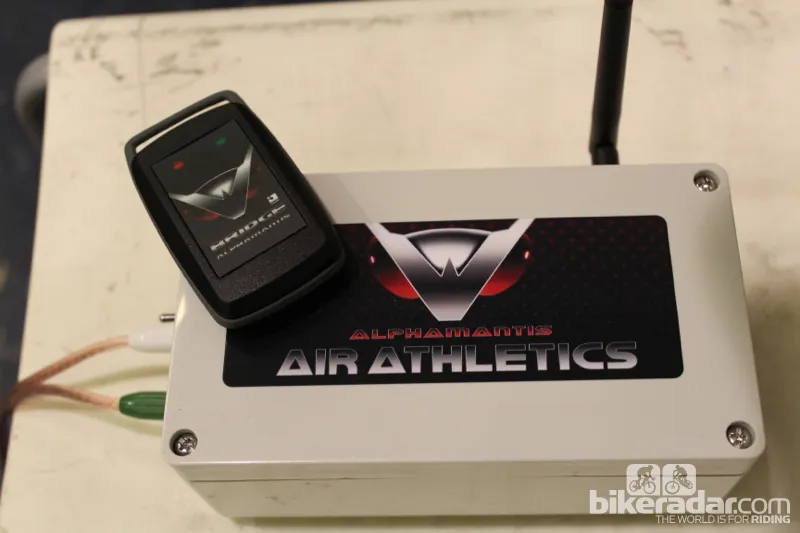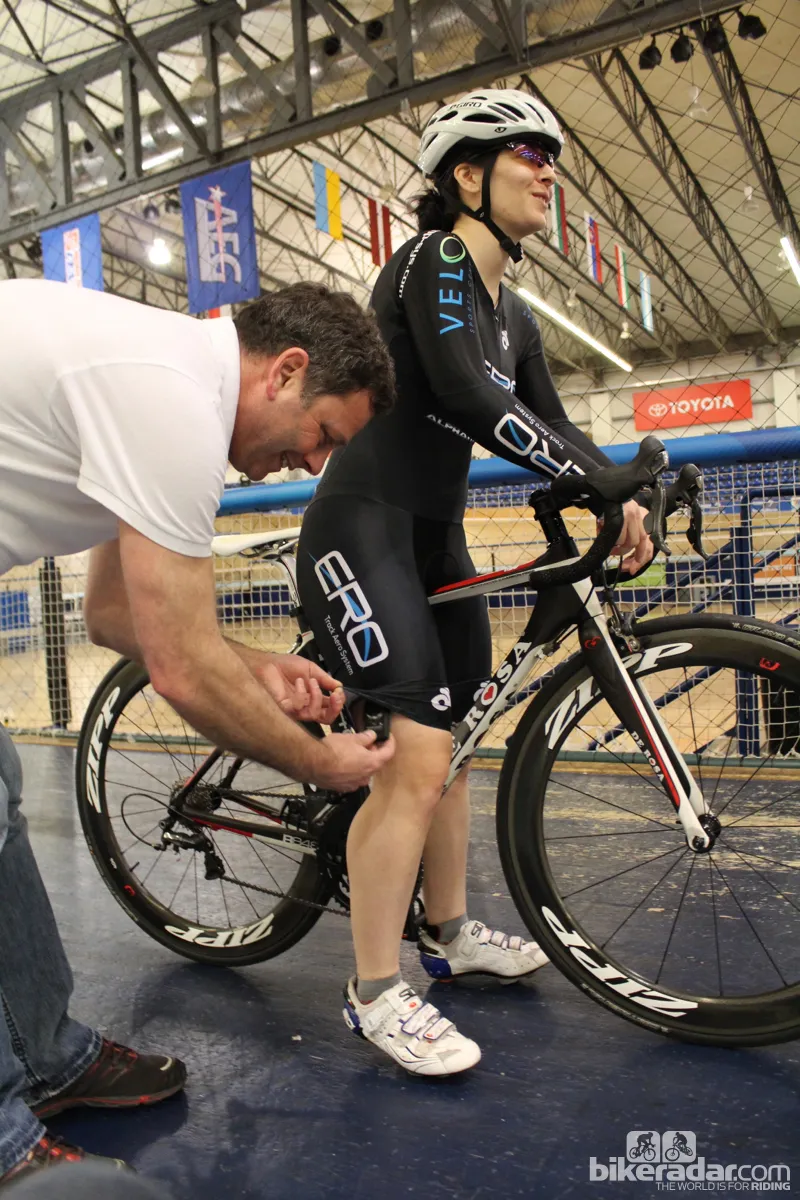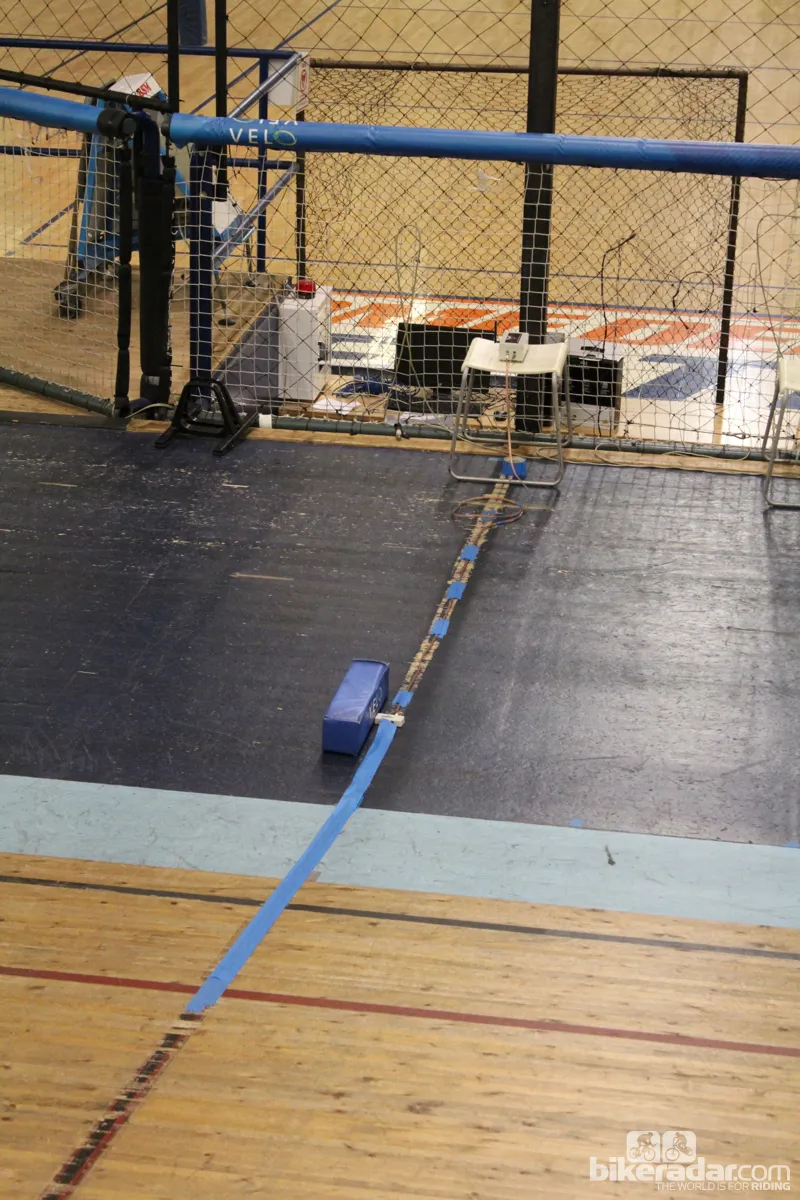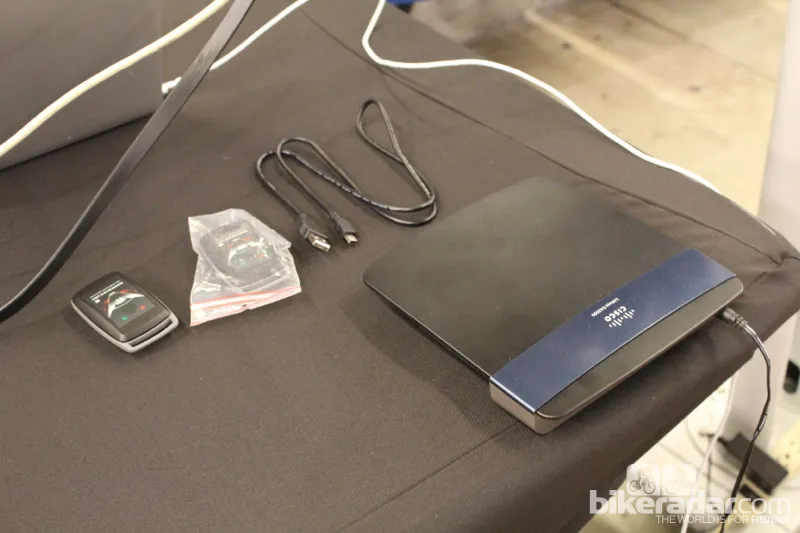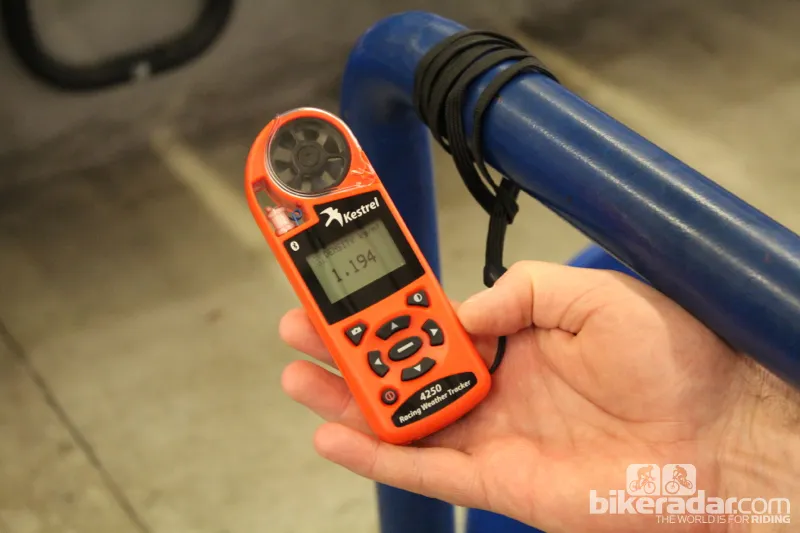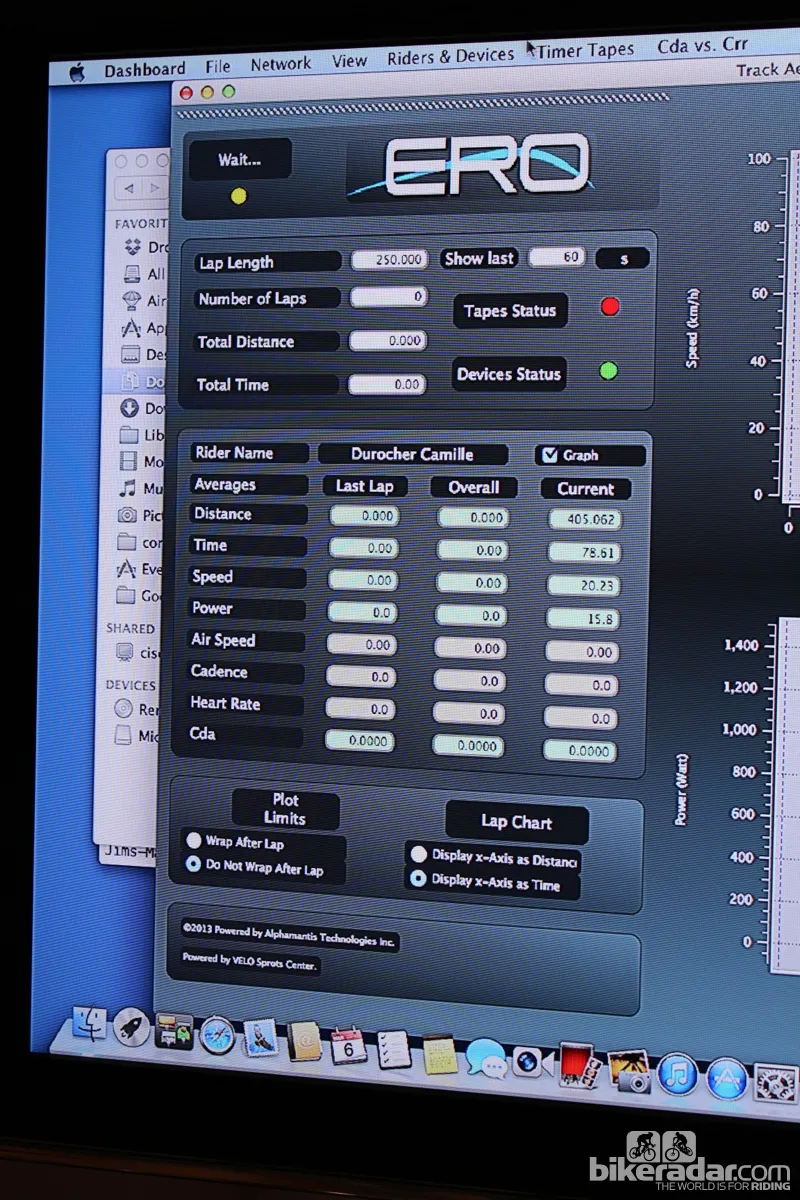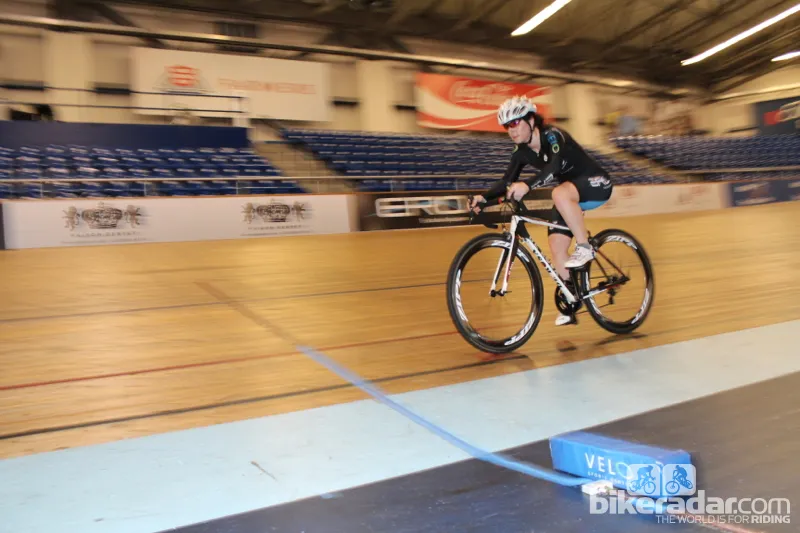This week ERO Sports launched as the next generation of bike fitting services, offering two-hour blocks of real-time aerodynamic data to riders as they test out new positions and/or equipment on an indoor velodrome.
ERO Sports uses the Track Aero System created by Canadian engineering firm Alphamantis that provides a rolling coefficient of drag, while getting ANT feeds of power and speed from a rider on a velodrome. The software also figures in rolling resistance, gravity and air density, based on a formula by Robert Chung.
The end result is powerful, actionable data.
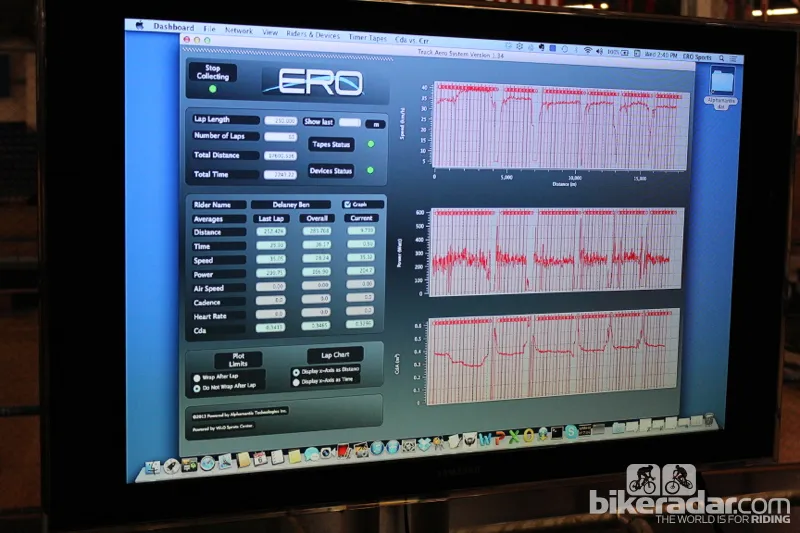
Rolling data is presented at right (with the most dramatic peaks and valleys being short stops to change gear or position). Key data, notably drag as Cda, is shown in numeric form at left for last lap, overall and current
What you get for your money
For everyday competitive riders, this new service could be huge. For $800 for a two-hour session, a rider can test out a variety of positions and equipment on an indoor velodrome while getting a CdA (coefficient of drag x frontal area) every lap and the data in Excel afterwards. The implications are like a wind tunnel but, in many ways, better. While some wind tunnels sell tunnel time to amateur riders who want to refine their position, they don’t allow for actual riding. And anyone who has ever attempted to find an aero position knows that what's fastest isn’t necessarily comfortable or even sustainable.
The VELO Sports Center (formerly the Home Depot Velodrome) in Los Angeles is the first track to offer this service, in conjunction with fitters ERO Sports, Alphamantis and track owner AEG.
The service comes with a fit consultation ahead of time by ERO, which uses Retül 3D motion capture to a variety of points and angles with the end goal of an action list of things to try on the track.
Unable to load media
“We measure back angle, knee angle, hip angle, knee over foot – and there are biomechanical parameters we know most people fall into,” said ERO Sports founder Jim Manton. “Then we know what we should or shouldn’t try. For example, ‘don’t drop the saddle more than 1cm because that will close up the hip angle.’”
The balance of aerodynamics and comfortable, sustainable fit is where the rubber meets the road in the real world, so having these two things addressed simultaneously is huge. BikeRadar editors have seen a number of professional riders tuned for aerodynamics in a wind tunnel, only to revert to an old position when on the road. That said, our own editor Jeff Jones has found via the wind tunnel and on the road that a very aero position doesn't have to compromise your power, provided you spend enough time training in it.
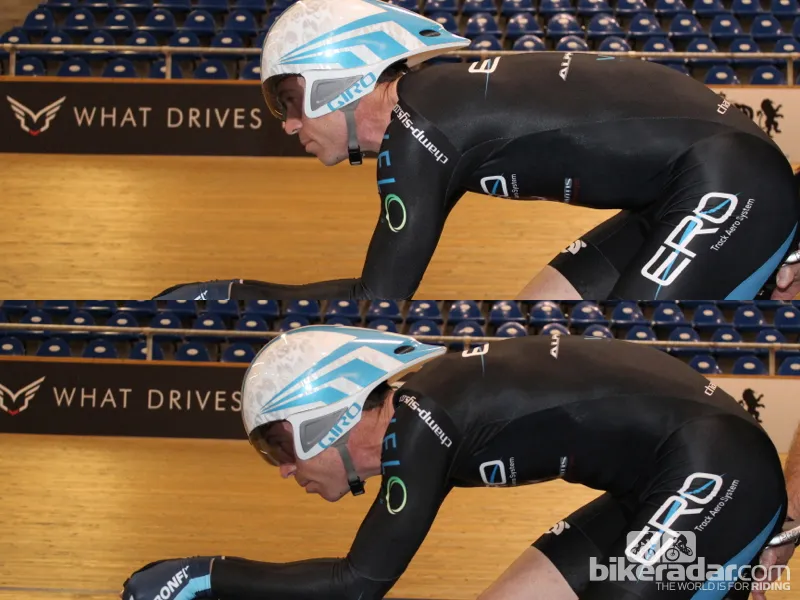
Kevin Phillips tested these two positions, with dramatic results
Andy Froncioni, PhD, of Alphamantis is quick to point out that the company is not trying to compete with or denigrate wind tunnels. And he freely admits that wind tunnels are superior in some respects, such as testing at multiple angles of yaw to simulate crosswinds. Note: on the track, yaw isn't zero but you also don't have the freedom to change it.
Alphamantis intends to eventually have partnerships with 20 indoor velodromes in North American, Europe and Australia, and work with an experienced coaching company at each to facilitate the rider’s experience. In the UK, Europe and Australia, their partners are Aero Coach Ltd.
Small changes can be tested real time
“The goal is to help coaches understand the aerodynamics of equipment, positioning and strategies,” said Froncioni, who worked with the Canadian national track team. “Some of the testing we do includes simulating the physics of strategies before implementation.”
For example, it is fairly common knowledge among cyclists that drafting behind another saves energy — because you have a lower drag coefficient, or CdA. But team pursuit riders know that having a rider draft you also lowers your drag, albeit to a much smaller degree. One implementation of the Alphamantis software is studying the total CdA of a pursuit squad in all its various configurations to determine the fastest lineup.
In practice, very small changes can be detected by the Alphamantis system, such as a rotation of the wrists while on aero extensions.

The Canadian track team used the Aero Track System with its Olympic pursuit squad
Alphamantis can also test for rolling resistance. In one demonstration at the LA velodrome, rider Kevin Phillips did five laps at 170psi on 19mm tires, then lowered to 160psi to five more laps. His Crr increased from .002 to .0035 with the lower pressure. That's a significant change for just 10psi – when translated into speed it's 3.5 seconds in a 4000m pursuit at 4:15 pace (assuming air density = 1.19, CdA = 0.18, 431W). Admittedly this was a short and simple test. We would want to see more runs at different pressures to be sure of this difference.
Using double discs, an aero helmet, a skinsuit and an incredibly refined position, Phillips is able to achieve a very impressive aero position with a CdA of 0.1887 with shrugged shoulders, a tucked head and his hands wrapped under the extensions.
But Manton pointed out that position and equipment gains are not equal across all riders.
“Aerodynamics is individual,” he said. “What’s faster for one rider may not be fast fast for another rider, whether that’s a particular piece of gear or a particular position. Then the next question is, is that position sustainable? That’s where the role of a fitter comes is. It’s a blast to see what works for certain riders and what doesn’t.”

Aero Track System can also measure rolling resistance. Test rider Phillips saw a big increase going from 170psi to 160psi
And Manton is also enjoying exploring seeing what gains translate from the wind tunnel, and which don’t, when hard pedaling, steering and leaning are added into the equation.
“This is another tool of bike fitting,” Manton said. “It just happens to be an exceptional tool.”
Check back soon to BikeRadar for a review of our experiences with the system.

